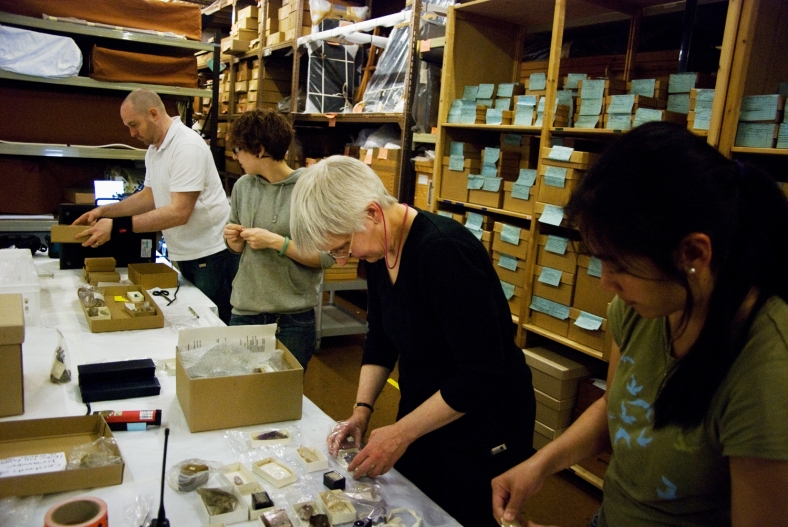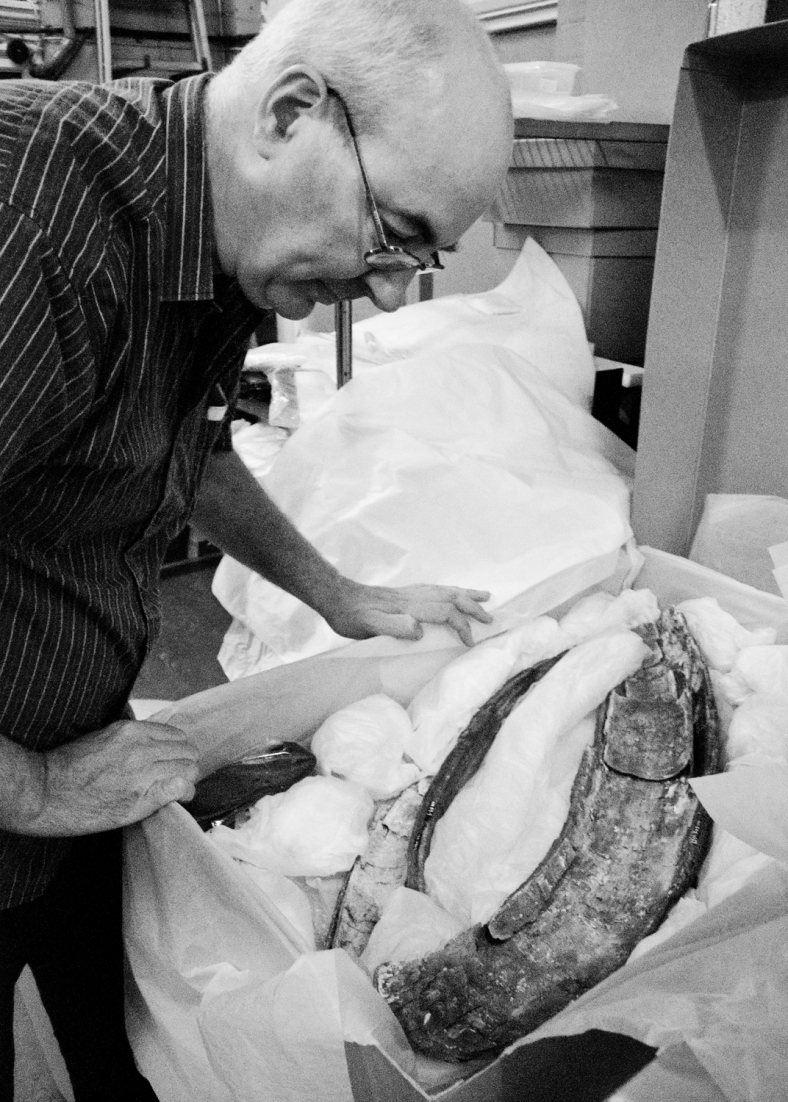In addition to the biological material in the Horniman’s natural science collections, we also have geological material. In fact, over half of the collection is fossils. In one of my recent posts, I told you about the Bioblitz reviews we’ve been doing at work; in this post I will share the geological review process. We used the same methodology as we did for the zoological material in terms of looking at four criteria (Historic, Scientific, Rarity/Uniqueness and Public Engagement) and we applied these to pretty much every single geological specimen in the collection. All 175,000 of them. Over three days.
With so many to look at in such a short space of time, it was clear that we had to be quick and not find ourselves lingering on any one specimen or cabinet for too long. We had to be strict. Luckily, Paolo and our visiting experts Monica (Minerals) and Matthew (Fossils) were able to race through the respective collections and gain a thorough overview of what we have.
NatSCA Talk August 2013
Minerals

Monica joined us from Oxford University Museum of Natural History and spent one day looking over our mineral specimens. Justine, our Documentation Assistant, and Kat, one of our fantastic volunteers, helped us out on the day also. The Horniman’s mineral material is comprised mainly of Arthur Wyatt’s collection, including his field notes.
Fossils
Matthew Parkes from the National Museum of Ireland helped us review the largest part of the natural science collections at the Horniman. Over three days we looked at about 175,000 specimens. Of course, we couldn’t look at every single one to any great degree but every single drawer, box or tray was opened or pulled out. Matthew literally looked over every single fossil specimen we have. Paolo even took him to the gallery in the museum. No stone (arf) was left unturned.
We’re still going over the findings from the review but Matthew highlighted a selection of Star specimens as well as some slightly less amazing. We’ll go back through these to see what we’ve got and how we can make the best use of them. For now, here are some of the pictures. Note the interesting stores which gave us quite the challenge.

One of the hundreds of drawers Paolo and Matthew looked through as I stood ready nearby with Bioblitz labels, lists and of course my camera.

The geoblitz takes us back to the Cambrian period: lovely specimen featuring several Ellipsocephalus hoffi, a trilobite.

A genuine Star specimen here. Ha. We’ll be revealing more about this collection later so I won’t say too much here.

Paolo and Matthew look like they’re conducting some clandestine business here. In fact, they’re reviewing hundreds of thousands of fossils!

Slightly more comfortable conditions (thanks in part to the higher ceilings), Matthew worked his way through all the boxed up material.
We’re still tweeting from @HornimanReviews and using Flickr to showcase my images so check them out.





















One thought on “GEOBLITZ: NATURAL HISTORY COLLECTIONS REVIEW 3”